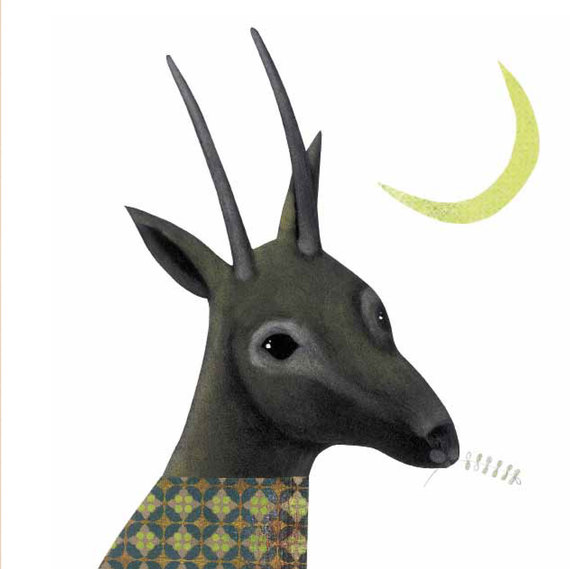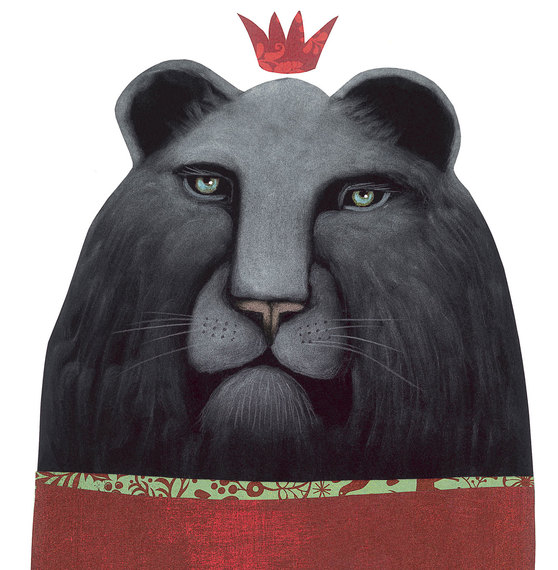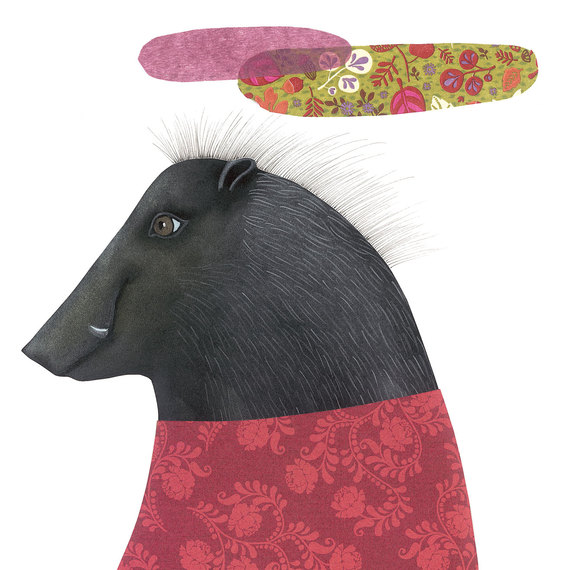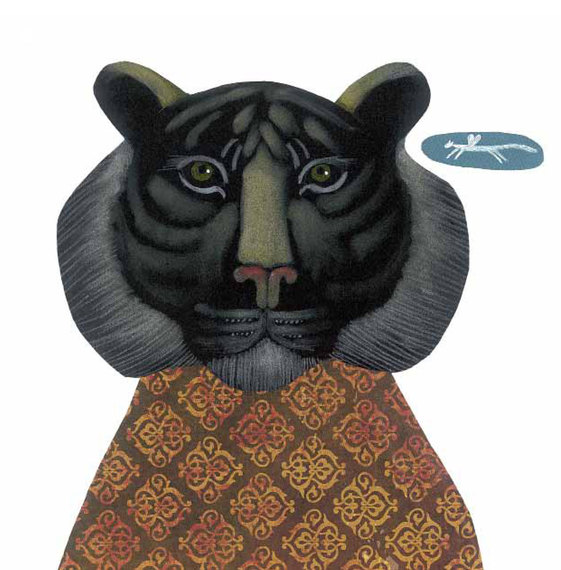From the great dinosaurs of the past to the birds and mammals who have vanished in our era, are vast numbers of animals have gone extinct, never to be seen again. And while large-scale planetary upheavals caused most of prehistory's extinctions, man has been the primary culprit during the current 12-million-year-old Holocene Era. Human myopia and inattention have caused many of these recent disappearances, and continue to endanger surviving species.
In "Cari Estinti," or "Dearly Departed" -- a new book from the Kalandraka publishing house -- author and illustrator Arianna Papini calls our attention to this important problem in her own way.
Papini, a Florence native with over 70 books and numerous awards to her name, uses whimsical drawings to tell the stories of twenty extinct animals, from their origins to their disappearances.
She imagines that those twenty animals continue to look down from a place above us where they can finally live in peace, safe from war and other dangers. Animals like the silent and alluring Saudi Gazelle (Gazella saudiya), which was exterminated by hunters and now "grazes in the clouds and gallops upwind."
![2015-01-12-Gazz.jpg]()
Many of them lived in the southern seas, others on northern coasts, and still others on the planet's most remote islands. They will never again soar through our skies, and they no longer go loping through our fields and savannas. Like the white lion (Panthers leo krugeri), "too visible even from afar," who for centuries was so legendary that his color came to symbolize the goodness of animal creation.
![2015-01-12-21LeoneBianco.jpg]()
Nor will we ever again see the Visayan warty pig (Sus cebifrons).
![2015-01-12-06CinghialeDalleVerruche.jpg]()
Nor the Javan tiger (Panthera tigris sondaica), which lived on its Indonesian island namesake.
![2015-01-12-TigrediGiava.jpg]()
And not the half-zebra, half-horse quagga, named for the sound it made.
Many of them will never return to swim in our rivers and oceans, like the baiji (Lipotes vexillifer), a freshwater dolphin from China's Yangtze River who now "gives back to the world by laughing at the sky."
![2015-01-12-Lipote.jpg]()
Season after season they disappear, often all that remains of them is an odd name: the ivory-billed woodpecker, the Tecopa pupfish (from the Mojave desert), the dodo (a wingless bird too ungainly to fly), the Guadelope amazon, and so many others.
Thanks to Papini and her drawings, these animals return to life at least on these pages, each of which asks that we not forget, and that we carry on without continuing to make the same mistakes.
This post originally appeared on HuffPost Italy and was translated into English.
In "Cari Estinti," or "Dearly Departed" -- a new book from the Kalandraka publishing house -- author and illustrator Arianna Papini calls our attention to this important problem in her own way.
Papini, a Florence native with over 70 books and numerous awards to her name, uses whimsical drawings to tell the stories of twenty extinct animals, from their origins to their disappearances.
She imagines that those twenty animals continue to look down from a place above us where they can finally live in peace, safe from war and other dangers. Animals like the silent and alluring Saudi Gazelle (Gazella saudiya), which was exterminated by hunters and now "grazes in the clouds and gallops upwind."

Many of them lived in the southern seas, others on northern coasts, and still others on the planet's most remote islands. They will never again soar through our skies, and they no longer go loping through our fields and savannas. Like the white lion (Panthers leo krugeri), "too visible even from afar," who for centuries was so legendary that his color came to symbolize the goodness of animal creation.

Nor will we ever again see the Visayan warty pig (Sus cebifrons).

Nor the Javan tiger (Panthera tigris sondaica), which lived on its Indonesian island namesake.

And not the half-zebra, half-horse quagga, named for the sound it made.
Many of them will never return to swim in our rivers and oceans, like the baiji (Lipotes vexillifer), a freshwater dolphin from China's Yangtze River who now "gives back to the world by laughing at the sky."

Season after season they disappear, often all that remains of them is an odd name: the ivory-billed woodpecker, the Tecopa pupfish (from the Mojave desert), the dodo (a wingless bird too ungainly to fly), the Guadelope amazon, and so many others.
Thanks to Papini and her drawings, these animals return to life at least on these pages, each of which asks that we not forget, and that we carry on without continuing to make the same mistakes.
This post originally appeared on HuffPost Italy and was translated into English.